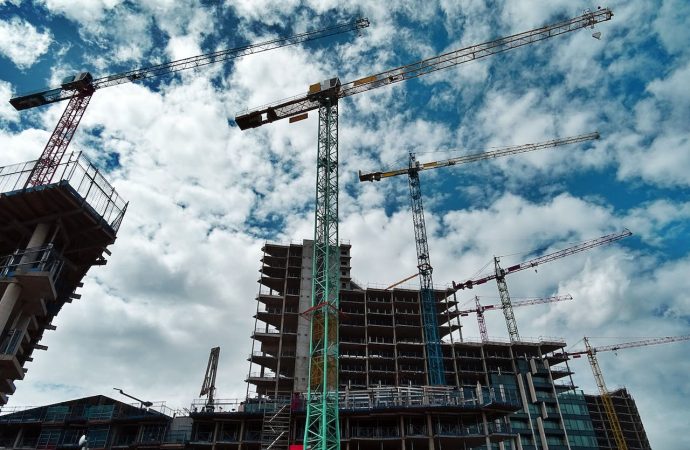Introduction In the realm of construction, managing costs is a fundamental concern for ensuring project viability. However, September brought an unforeseen challenge to the construction industry in the United States in the form of rising input costs. In this article, we will delve into the contributing factors behind this surge and the potential implications it
Introduction
In the realm of construction, managing costs is a fundamental concern for ensuring project viability. However, September brought an unforeseen challenge to the construction industry in the United States in the form of rising input costs. In this article, we will delve into the contributing factors behind this surge and the potential implications it holds for the sector. Additionally, we’ll provide a comparative table highlighting key impacts for clarity.
Understanding the Surge
This section aims to provide a comprehensive understanding of the factors contributing to the increase in construction input costs.
Escalating Raw Material Costs
The primary catalyst for the surge in construction input costs in September is the significant escalation in raw material prices. Crucial construction materials, such as steel, lumber, and concrete, have witnessed substantial price hikes. These increases are primarily attributed to supply chain disruptions and elevated demand. Steel prices, for example, saw an astounding surge of 200%, and lumber prices spiked by 250% in just a matter of months.
Soaring Labor Expenses
Labor costs also play a substantial role in this surge. A combination of factors, including labor shortages and rising wages, has led to higher labor expenses within the construction industry. The labor market was significantly affected by the pandemic, with skilled workers becoming scarcer and wages rising to attract and retain talent.
Impact on the Construction Industry
This section will delve into the potential consequences of rising construction input costs on the industry as a whole, providing a comparative table for clarity.
Comparative Table: Impact of Rising Input Costs
| Impact on Construction Industry | Description |
|---|---|
| Project Delays | Delays in construction schedules due to budget revisions. |
| Cost Overruns | Projects potentially becoming financially burdensome. |
| Impact on Home Prices | Higher home prices affecting buyer demand. |
| Value Engineering | Reevaluating project designs and materials for savings. |
| Negotiations and Contract Revisions | Reevaluating contract terms to share the financial burden. |
Project Delays
One of the immediate consequences of surging input costs is the potential for project delays. As costs increase, contractors may need to revisit their budgets, which can subsequently lead to delays in construction schedules. These delays can have a cascading effect on project timelines and completion dates.
Cost Overruns
Contractors and developers may face the challenge of cost overruns. With input costs surpassing initial estimates, projects may become financially burdensome, potentially impacting overall profitability. Cost overruns can strain the financial health of construction companies and lead to disputes with clients or investors.
Impact on Home Prices
In the residential construction sector, the increase in input costs may result in higher home prices. Homebuyers might find themselves paying more for properties, potentially affecting the demand for new homes. The real estate market, especially for first-time homebuyers, could experience a significant impact, potentially altering the dynamics of the housing sector.
Strategies for Mitigation
This section will explore the strategies that the construction industry may employ to mitigate the impact of rising input costs.
Value Engineering
One approach to mitigate the impact of higher costs is value engineering. This strategy involves reevaluating project designs and materials to identify cost-saving opportunities without compromising quality. Value engineering can help maintain project quality while ensuring that projects stay within budget.
Negotiations and Contract Revisions
Contractors and subcontractors may find it imperative to initiate negotiations to reevaluate terms and contracts in response to rising input costs. This collaborative approach can help distribute the financial burden more equitably among all stakeholders. Renegotiating contracts to reflect the new reality of increased costs can foster collaboration and minimize disputes.

Photo by Pixabay: https://www.pexels.com/photo/three-people-sitting-beside-table-416405/
Looking to the Future
As the construction industry grapples with the consequences of rising input costs, the path forward remains uncertain.
Industry Resilience
The industry has consistently demonstrated remarkable resilience when confronted with adversities. It is highly likely to adapt and find innovative solutions to offset rising costs and ensure the continued viability of projects. Resilience in the face of challenges is a defining trait of the construction sector.
Policy Implications
Government policies, such as trade agreements and regulations, can significantly impact construction input costs. Future policy decisions may either exacerbate or alleviate the situation, making them a critical consideration for industry stakeholders. Advocacy for policies that promote stable pricing and supply chain resilience will be essential.
Conclusion
The surge in construction input costs in September presents a formidable challenge to the construction industry in the United States. Escalating raw material prices and labor costs can potentially result in project delays, cost overruns, and higher home prices for buyers. To navigate these challenges, the industry can employ strategies like value engineering and contract negotiations.
While the road ahead remains uncertain, the construction sector has consistently displayed its adaptability and capacity for innovation in the face of adversity. Future policy decisions and market dynamics will play a pivotal role in shaping the construction industry’s response to these escalating input costs. The industry will continue to build, innovate, and overcome challenges, reflecting the spirit of resilience that defines it.

















Leave a Comment
Your email address will not be published. Required fields are marked with *